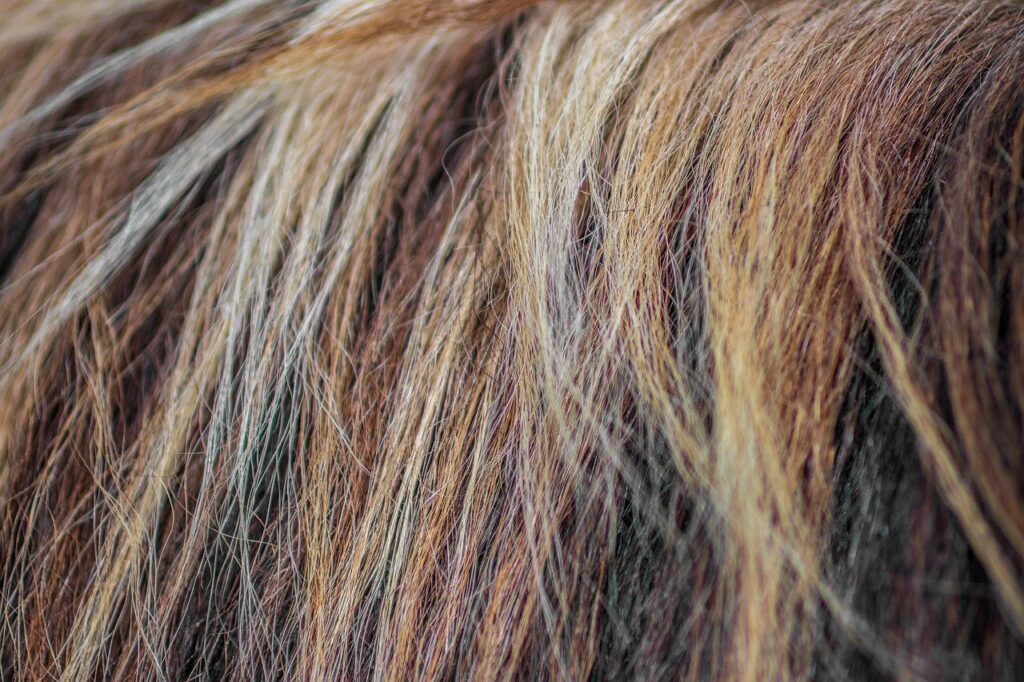Have you ever wondered about the best way to straighten your hair without causing damage? Whether you have naturally curly locks or wavy tresses, finding the right straightener is crucial in maintaining your hair’s health and vitality. Let’s unravel the mystery behind which straightener is least damaging to hair and explore the factors to consider for smooth, shiny strands.

The Basics of Hair Structure
Understanding Hair Anatomy
Your hair consists of three layers: the medulla, cortex, and cuticle. The medulla is the innermost part, while the cortex forms the bulk of the hair, housing the pigment and proteins that give hair its strength and elasticity. The outermost layer, the cuticle, acts as the protective barrier. It’s composed of overlapping cells, similar to roof shingles, which can lift with high heat or damage, leading to frizz and breakage.
How Hair Straighteners Work
Hair straighteners, or flat irons, use heat to break the hydrogen bonds in your hair’s cortex. This temporary rearrangement allows the hair to be styled straight until it’s exposed to moisture. However, frequent use of high heat can compromise the cuticle, making hair prone to dryness and split ends.
Types of Hair Straighteners
Ceramic Straighteners
Ceramic straighteners are a popular choice due to their even heat distribution. They are gentler on the hair and glide through strands without pulling. Here’s a quick comparison of ceramic straighteners:
| Feature | Ceramic Plates |
|---|---|
| Heat Distribution | Even |
| Suitability | Most hair types |
| Damage Risk | Lower with quality cleansers |
| Cost | Moderate to high |
Ceramic plates often have a ceramic coating, which can wear off over time. High-quality models with full ceramic plates offer better durability and consistent temperature management.
Tourmaline Straighteners
Tourmaline straighteners are known for their ability to emit negative ions that counteract frizz. These straighteners offer additional shine and are particularly effective for thick, curly hair.
| Feature | Tourmaline Plates |
|---|---|
| Heat Distribution | Even, with negative ion emission |
| Suitability | Thick, frizzy hair |
| Damage Risk | Lower due to quicker results |
| Cost | Moderate to high |
Titanium Straighteners
Titanium straighteners heat up quickly and maintain steady temperatures. However, they can be quite intense, so moderation is key to reducing damage.
| Feature | Titanium Plates |
|---|---|
| Heat Distribution | Extremely even |
| Suitability | Professional use, stubborn hair |
| Damage Risk | Higher, requires experience |
| Cost | High |
Ionic Straighteners
Ionic straighteners use ionic technology to reduce static and frizz, offering a sleek finish. They are especially beneficial if you have dry or frizzy hair.
| Feature | Ionic Technology |
|---|---|
| Heat Distribution | Even, with static reduction |
| Suitability | Dry, frizzy hair |
| Damage Risk | Lower |
| Cost | Moderate to high |
Factors to Consider When Choosing a Straightener
Hair Type and Texture
Your hair type plays a significant role in determining the ideal straightener. Fine hair requires lower heat, while thick or coarse hair benefits from higher temperatures.
| Hair Type | Recommended Straightener |
|---|---|
| Fine/Thin Hair | Ceramic, Ionic |
| Medium Hair | Ceramic, Tourmaline |
| Thick/Coarse Hair | Titanium, Tourmaline |
Temperature Control
A straightener with adjustable temperature settings allows you to customize the heat according to your hair type. Lower temperatures are safer for everyday styling, while higher settings may be needed for professional styling sessions. Aim for a straightener with a range of 250°F to 450°F.
Plate Width and Shape
The width and shape of the plates can influence styling efficiency. Wider plates are great for long or thick hair as they cover more surface area, reducing styling time. Narrower plates are ideal for shorter styles and precision work.
| Plate Width | Suitable Hair Length |
|---|---|
| 1-inch | Short to medium |
| 1.5-inch | Medium |
| 2-inch | Long |
Heat Recovery Time
A straightener with a quick heat recovery time ensures consistent styling. This feature helps maintain the desired temperature throughout the straightening process, reducing the need for repeated passes that can damage hair.
Tips to Minimize Hair Damage
Use Heat Protectant
Applying a heat protectant spray or serum before straightening creates a barrier against high temperatures. This step is essential in preserving your hair’s moisture and elasticity.
Avoid Daily Use
Frequent use of hair straighteners can lead to cumulative damage. Strive to limit straightening sessions to two or three times a week and embrace your natural texture when possible.
Maintain Clean Plates
Build-up of hair products on the plates can cause uneven heat distribution. Regularly clean your straightener with a soft, damp cloth to ensure it glides smoothly.
Opt for Quality Over Cost
Investing in a high-quality straightener may involve a higher initial cost, but it pays off in the long run by reducing the risk of damage and extending the lifespan of the device.

The Best Straighteners for Minimal Hair Damage
Dyson Corrale
The Dyson Corrale stands out for its flexing plates that shape around your hair. This technology allows you to achieve results with less heat, reducing damage.
| Feature | Dyson Corrale |
|---|---|
| Plate Type | Manganese Copper Alloy |
| Flexing Plates | Yes |
| Wireless | Yes |
| Adjustable Heat | Yes, 330°F to 410°F |
| Cost | High |
GHD Platinum+
The GHD Platinum+ straightener features ultra-zone predictive technology that ensures even heat distribution across the plates. It adapts to your hair thickness for optimal styling at a safe 365°F.
| Feature | GHD Platinum+ |
|---|---|
| Plate Type | Ceramic |
| Heat Technology | Predictive |
| Temperature | 365°F |
| Cost | High |
BaBylissPRO Nano Titanium
The BaBylissPRO Nano Titanium straightener is admired for its ability to maintain high heat consistently. It’s particularly effective for stubborn or coarse hair types.
| Feature | BaBylissPRO Nano Titanium |
|---|---|
| Plate Type | Titanium |
| Temperature | Up to 450°F |
| Heat Technology | Ionic |
| Cost | Moderate to high |
Alternatives to Traditional Flat Irons
Steampod
The L’Oréal Professionnel Steampod uses steam to straighten hair, which can be less damaging than dry heat. The continuous steam reduces frizz and adds shine.
| Feature | L’Oréal Steampod |
|---|---|
| Technology | Steam |
| Temperature | Adjustable |
| Cost | Moderate to high |
Hot Brushes
Hot brushes, combining a brush and heat, offer a gentler alternative to traditional straighteners. They are perfect for quick touch-ups and daily smoothing.
| Feature | Hot Brushes |
|---|---|
| Heat Technology | Ceramic, Ionic |
| Suitability | Everyday use, quick fixes |
| Cost | Varies |
Keratin Treatments
Keratin treatments provide a semi-permanent solution to manage frizz and curl. These treatments infuse the hair with keratin, a protein that strengthens and smoothes strands.
| Feature | Keratin Treatments |
|---|---|
| Duration | 2-4 months |
| Maintenance | Special shampoo/conditioner |
| Cost | High |

Conclusion
Choosing the least damaging straightener involves understanding your hair type and the available technology. Prioritize quality, adjustable heat settings, and advanced features like ionic or steam technology. Incorporating protective measures, like using heat protectants and limiting heat exposure, will further safeguard your hair’s health. Ultimately, a thoughtful approach to using hair straighteners ensures you can enjoy sleek, straight locks without compromising your hair’s natural beauty.



